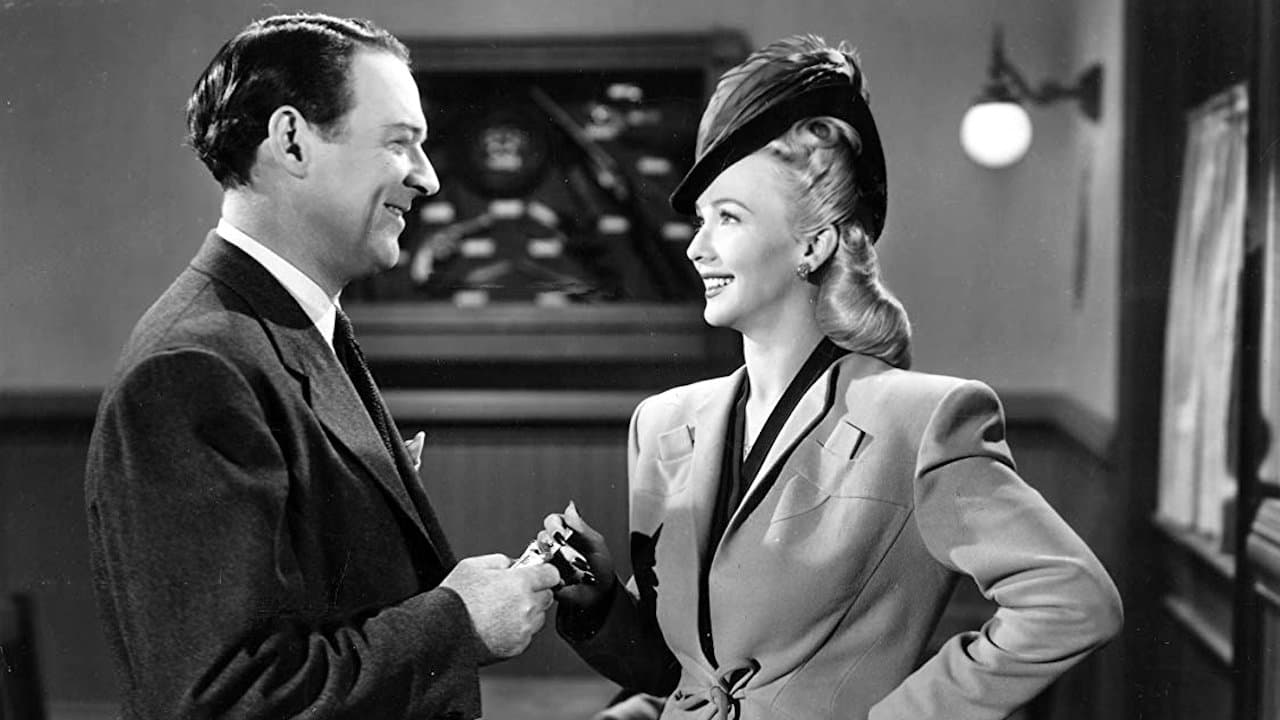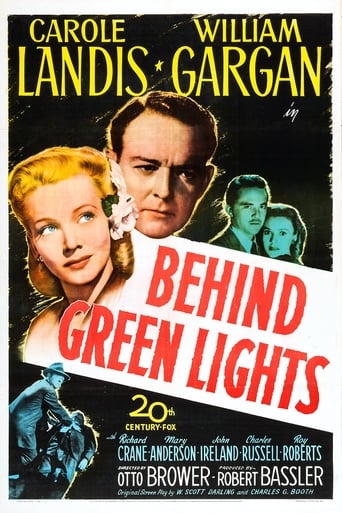

This major studio "B" is available on a Grapevine DVD coupled with Poverty Row's Lady in the Death House (1944) which allows us a rare opportunity to compare major to minor "B" styles. Well, as you might expect, except in one respect, the 20th Century Fox product has it all over the Gower Street offering, despite the fact that Lady in the Death House has a decent plot, a very capable cast and skillful direction. But Lady does have one over-riding asset: In my mind I can picture Poverty Row's heroine Jean Parker very accurately indeed. Who could forget Parker's walk to the death chamber as the camera tracks with her for her 49 steps? However, where the Fox picture excels is in the spread and variety of its sets, the enormous roll-up of players (led by William Gargan, with John Ireland in a small role, plus Roy Roberts, Mabel Paige, Richard Crane, Mary Anderson) and the nimble, fast- paced direction (Otto Brower). But I can't recall the Fox movie's number one star, Carole Landis, at all. Even looking at her photo doesn't stir my memory one bit. On the other hand, Don Beddoe I remember particularly well even though he's not listed (or pictured) on the DVD cover at all, despite the fact that – with his usual expertise – he plays a major part in the action.
... View MoreThis noir B thriller from 20th Century Fox shows the temptations that the police are under. William Gargan stars and plays a doggedly honest cop who has a homicide literally dropped on his doorstep at the precinct headquarters. It's almost like someone was taunting the cops to solve this one.The victim in Behind Green Lights was a seedy private detective who had a nice sideline in blackmail and no one really is going to mourn his passing. But the case is loaded with political implications because Carole Landis, daughter of the reform candidate for mayor was seen leaving the victim's apartment.The largest newspaper in town is supporting the current administration and Roy Roberts says that the easiest thing in the world for Gargan to do to advance his career is pick up Landis and book her. At least until the election is over which will be in a few days. Something about Roberts sticks in Gargan's craw. He could easily justify holding Landis and helping his career, but he won't do it.There's a nice array of suspects and by definition performances. There are two keys here, a very sleazy medical examiner played by Don Beddoe and a bag lady played by Mabel Paige. Between the two of them the real story comes out.Behind Green Lights bears no small resemblance to Detective Story in structure. Most of the action takes place in the police station. This film is nicely paced with a few good comic touches. I can't mention them because they are within the plot structure and not just added on. This noir film is a good one to check out.
... View MoreThis is about what you'd expect from a hastily written and produced murder mystery from 1946. The director must have had the producer looking over his shoulder, taking notes on time and expenses. But even at that, Otto Brower's direction displays a staggering lack of imagination. I'll give one example and let it go.Near the beginning, a cub reporter is being shown around the police station where most of the action is to take place. His fellow newspaperman walks him past the usual people who show up in police stations with complaints or being questioned for having performed some suspicious act, perhaps First Degree Lurking.The guide walks the new reporter down the hallway and they pass three sets of cops interviewing people who have business with the police. Each time they reach a new pair, the reporters stop and stand silently while the cop and the complainant exchange a few humorous words, then move on to the next pair, where the routine is repeated, as in a vaudeville skit. Whines one African-American, "She done run off with my car." Detective: "Nothing you can do, that car is community property." Complainant: "But she done took it OUT of da community!" What's irksome isn't the racial humor. That was common enough at the time and often was pretty funny. And it's not even that the lines themselves are no more than slightly amusing. And it's not that this routine -- the camera panning a police station in which civilians are being quizzed one after another -- is so thoroughly familiar. It's that the pair of reporters STOPS, and so does the camera, until each skit is completed, before moving on. All Herr Brower needed to do before the take was give a simple direction to the reporters, like, "You can slow down but keep walking." That would have strained no one's patience and made little demands on anyone's talent.The performances are good enough. William Gargan is bland as the nice lieutenant who is tempted to knowingly follow a false lead because of a hypothetical imperative. J. Farrel MacDonald -- a great bartender in the same year's "My Darling Clementine" -- is lost in a minor role. A villainous newspaper editor and a sleazy blackmailer look suitably slimy. An old Irish lady who sells flowers on the street isn't nearly as funny or charming as the writers had hoped. John Ireland dominates each scene he's in. The musical score is pedesterian. There is some nice photography by Joe MacDonald, including an outdoor shot (one of only two in the entire movie), in which a big car glides along a wet cobblestone street. A little touch of expressionism in the night. It's hardly worth describing the plot. An important newspaper wants an innocent young woman arrested for murder for political reasons; her father is running on the reform ticket or something. I may be getting it mixed up with the newspaper in "Boomerang." The Press Room is straight out of "The Front Page," including the oddball who wears a queer coat and is fussy about it. The resolution of the mystery appears suddenly out of a puff of smoke. The writers weren't breaking their backs on this one. A recently dead body gets mixed up with that of "a floater we found a couple of weeks ago", and the wrong bodies gets wheeled around under their sheets. At one point, a live but balmy escapee slips under the sheets too.You know what? Without too much trouble, the lines could have been rewritten as DELIBERATE gags, see. And you put Bob Hope and Mantan Moreland into the leads. And instead of Carole Landis, you use Dorothy Lamour. And you make the movie at Paramount. And -- voila! -- it's a successful comedy!
... View MoreThis is a wonderful mystery film with a film noir-like edge. Oddly, the film has mostly been forgotten today and it's slipped into the public domain--which often means that a film is terrible--which this film certainly is NOT! The film begins with a wild setup--a car with a dead body in it rolls to a stop right in front of the police station! Inside the car is a shady detective--but who killed him and why? The film did a great job of keeping you guessing--as it's NOT readily apparent who did it. Into the mix are some nice plot elements--such as the introduction of an inexperienced news reporter into the tale as well as the prime suspect being the daughter of a man who is running for election in only days! As for the acting, that and the script are what I really liked. Despite being mostly unknown and supporting actors, the film was dandy entertainment. In particular, I liked William Gargan as the investigating lieutenant--he was very believable and far from flashy--but this made his role so wonderful. A big-name star might have tried too hard to dominate the scenes or take too commanding a presence--instead, he just seemed like a smart and decent "everyman". Also, while his role was very small, I was happy to see a young John Ireland--before he rose to fame in the world of Noir.Overall, for mystery and film noir fans, this is a great little film. It's intelligently written and doesn't assume the audience is stupid! Great job.
... View More